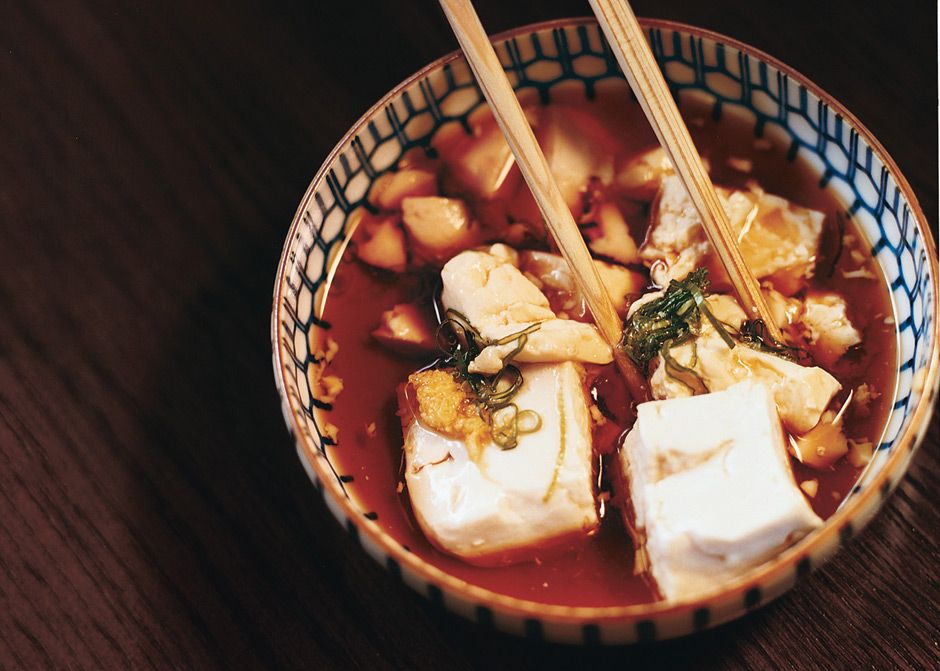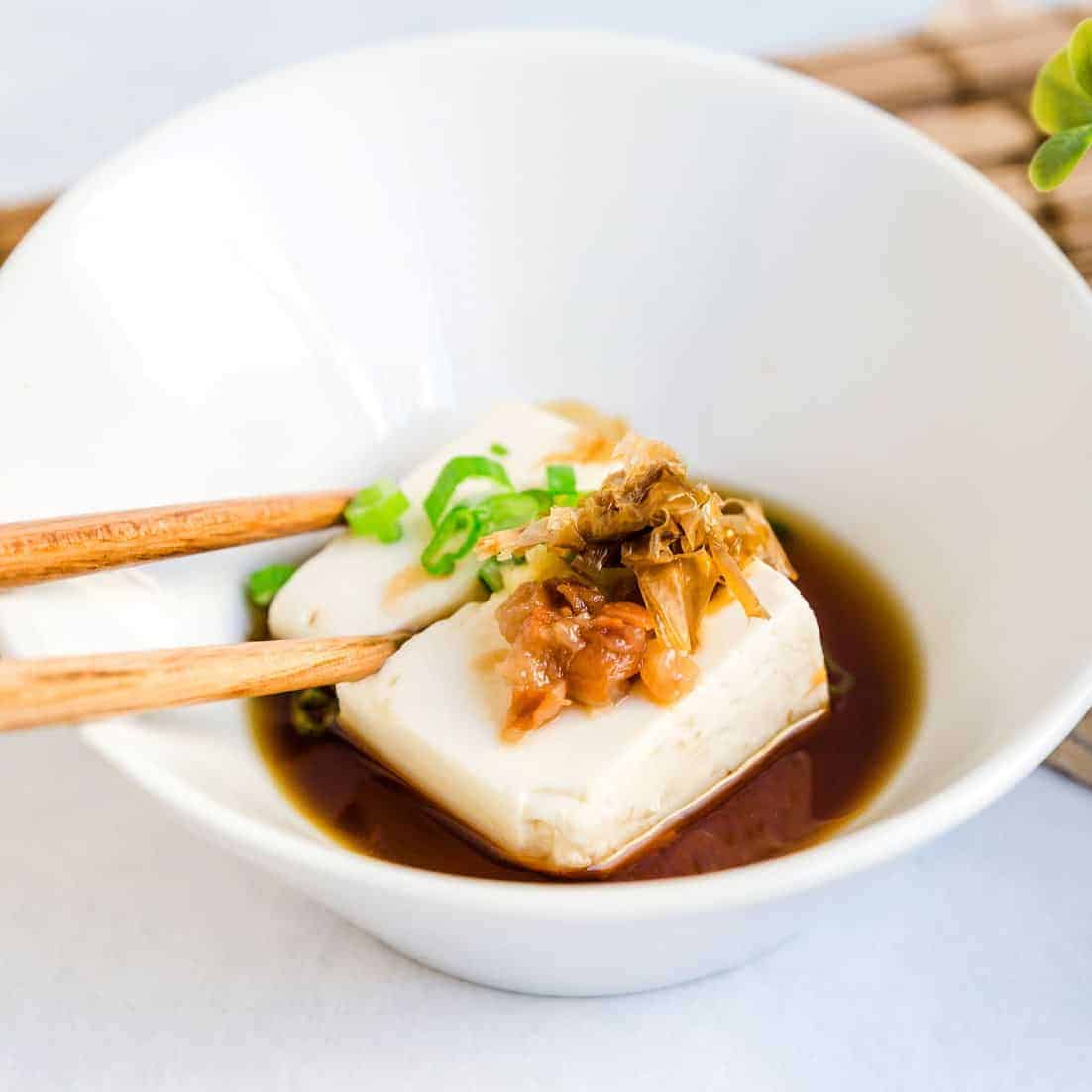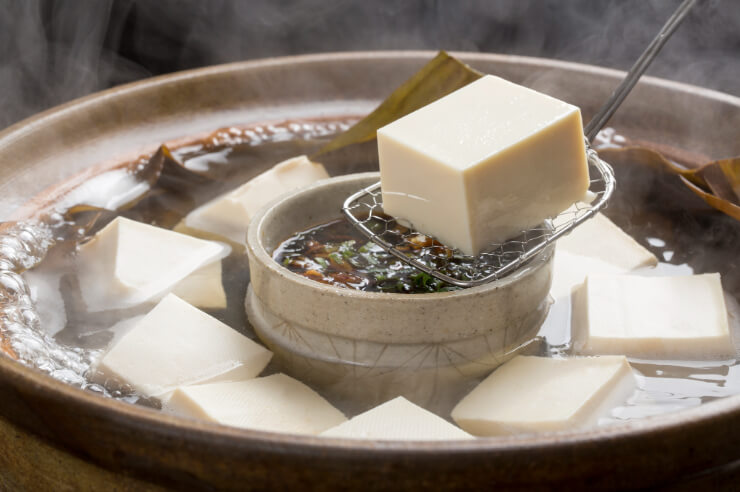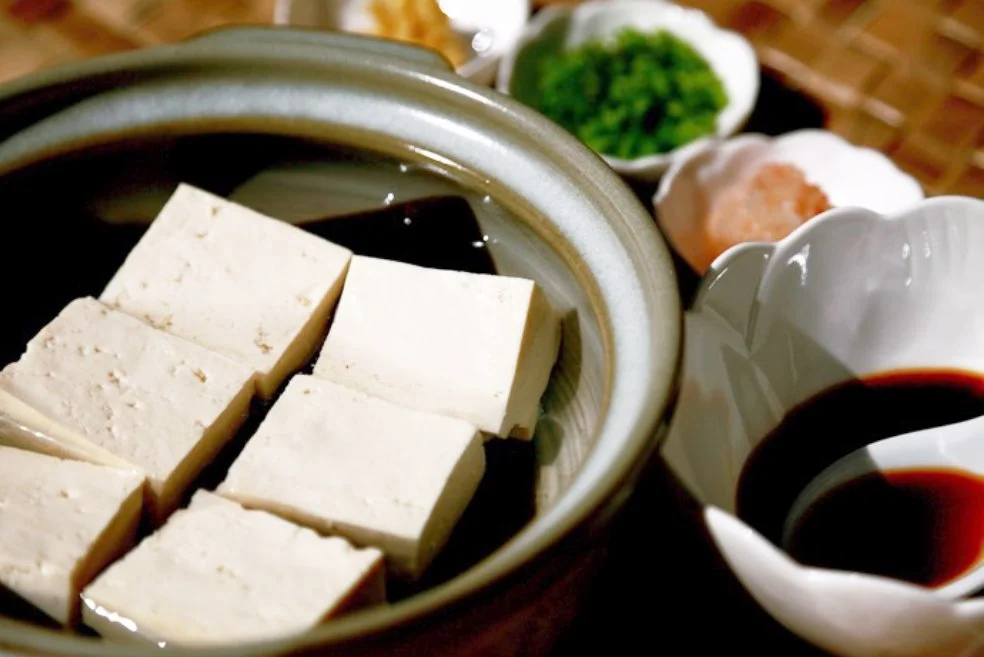Review Yudofu: The Soulful Taste of Kyoto’s Temple Cuisine
The Origins of Yudofu – From Zen Temples to Kyoto’s Culinary Heritage
A Dish Born from Monastic Simplicity
Yudofu, meaning “tofu in hot water,” originated centuries ago in Kyoto’s Buddhist temples. Monks followed a vegetarian diet known as shojin ryori, emphasizing purity and respect for life. Yudofu became a spiritual meal that nourished both body and soul. Its simple preparation — gently simmering tofu in hot water and serving it with dipping sauces — embodies the Japanese aesthetic of wabi-sabi, finding beauty in simplicity.

Kyoto: The Heartland of Yudofu Tradition
Kyoto, the cultural capital of Japan, remains the birthplace and soul of Yudofu. Near iconic temples like Nanzen-ji and Ryoan-ji, traditional Yudofu restaurants still serve this tranquil dish in tatami rooms overlooking serene gardens. According to Yoshida Hotel, dining on Yudofu in Kyoto is not just a meal — it’s an immersion in centuries-old Zen philosophy.
The Art of Yudofu – Simplicity Perfected
Selecting the Finest Ingredients
The secret behind exceptional Yudofu lies in the quality of its ingredients. Artisanal tofu, fresh Kyoto spring water, and natural kelp (kombu) create the base of this dish. The tofu is soft yet firm enough to hold its shape as it warms in the broth. This combination results in a gentle, creamy texture and subtle sweetness that define Kyoto’s culinary finesse.

The Role of Dashi and Kombu
Unlike complex broths found in other Japanese hot pots, Yudofu relies on the delicate flavor of kombu — dried kelp — to enhance the natural taste of tofu. The broth is not meant to overpower but to uplift. Yoshida Hotel emphasizes that this restraint reflects the Japanese approach to flavor: highlighting the purity of each ingredient.
The Traditional Way to Enjoy Yudofu – A Ritual of Calm and Grace
The Gentle Simmering Process
A traditional Yudofu meal begins with tofu cubes placed in a clay pot filled with hot water infused with kombu. The dish simmers softly, never boiling, to maintain the tofu’s smooth texture. Guests lift each piece with bamboo ladles, dipping it into ponzu or sesame sauce before savoring its silky warmth. This slow, meditative process invites reflection and relaxation.

The Art of Dipping Sauces
The dipping sauces in Yudofu are as important as the tofu itself. Ponzu, made from citrus and soy sauce, provides refreshing acidity, while sesame sauce adds a nutty depth. Grated ginger, scallions, or shichimi pepper may be added for subtle heat. Together, these elements create harmony between flavor and mindfulness.
The Spiritual and Cultural Essence of Yudofu
Yudofu and Zen Philosophy
In Zen Buddhism, food is an extension of meditation. Yudofu represents clarity and balance, a reflection of Japan’s respect for nature’s gifts. Monks believed that eating Yudofu calms the mind and restores focus. Yoshida Hotel highlights how this philosophy endures today — reminding diners to appreciate every bite with gratitude and awareness.

A Meal for All Seasons
Though Yudofu is most associated with cold winter months, it is enjoyed year-round in Kyoto. Its warmth provides comfort in winter, while its lightness refreshes the body in summer. This adaptability mirrors Japan’s deep connection with seasonal change and balance in life.
Yudofu in Kyoto’s Culinary Landscape
Famous Yudofu Restaurants Near Temples
Kyoto’s temple districts are home to legendary Yudofu restaurants that preserve this centuries-old tradition. The calm surroundings of Nanzen-ji, Tenryu-ji, and Ryoan-ji offer an immersive dining experience where guests enjoy Yudofu while gazing at peaceful gardens and koi ponds. Yoshida Hotel notes that these venues embody Kyoto’s refined culinary heritage.

A Modern Interpretation of Tradition
While classic Yudofu restaurants stay true to Zen simplicity, contemporary chefs in Kyoto have begun reimagining the dish. Some introduce flavored broths, truffle salt, or even tofu made from soy milk blends. This modern twist attracts younger diners while maintaining the essence of Yudofu — gentle, honest, and deeply satisfying.
The Ingredients that Define Yudofu – Purity and Precision
The Role of Kyoto’s Water
Kyoto’s pure, soft water is one of the secrets behind Japan’s best tofu. It enhances texture and flavor, allowing tofu to absorb subtle umami from kombu. Yoshida Hotel explains that local tofu artisans treat water as sacred, ensuring every block of tofu embodies the city’s natural harmony.

Complementary Side Dishes
A traditional Yudofu set often includes small plates of pickles, rice, and simmered vegetables. These side dishes balance the meal’s simplicity, adding texture and variety. The presentation — often in lacquer boxes or handmade ceramics — reflects Kyoto’s attention to aesthetic detail.
Yudofu in Modern Wellness and Nutrition
A Healthy and Mindful Choice
Rich in plant-based protein and low in fat, Yudofu aligns perfectly with modern health trends. It’s a staple for those seeking balance and nourishment without excess. Yoshida Hotel observes that this ancient dish fits seamlessly into today’s wellness-focused lifestyle, offering comfort and nourishment in one serene bowl.

The Philosophy of Eating Light
In Japanese culture, health is deeply linked to moderation. Yudofu encourages mindful eating — taking time to appreciate texture, warmth, and subtle taste. This approach promotes digestion, relaxation, and mental clarity, proving that simplicity can be the ultimate sophistication.
The Cultural Significance of Yudofu – Beyond the Table
Symbol of Kyoto’s Culinary Spirit
More than just a dish, Yudofu represents Kyoto’s character: elegant, calm, and connected to tradition. It encapsulates Japan’s approach to cuisine — refined yet humble, seasonal yet timeless. Yoshida Hotel describes it as a bridge between food and philosophy, where each meal becomes a quiet moment of joy.

Yudofu in Japanese Ceremonies and Festivals
During temple events and local celebrations, Yudofu is often served to guests as a gesture of respect and hospitality. It reflects Kyoto’s enduring reverence for community and togetherness. The act of sharing Yudofu transcends dining — it becomes a cultural exchange rooted in gratitude.
Experiencing Yudofu – A Journey Through Kyoto’s Soul
Where to Savor Authentic Yudofu
Travelers visiting Kyoto should not miss the chance to experience Yudofu near its spiritual homes. Nanzen-ji’s tranquil gardens, Ryoan-ji’s Zen stones, and Arashiyama’s bamboo groves provide the perfect backdrop for this contemplative meal. Yoshida Hotel recommends exploring these districts to immerse in Kyoto’s culinary and spiritual harmony.

Creating Yudofu at Home
Bringing Yudofu into your own kitchen is a meaningful way to embrace Japanese culinary mindfulness. All you need is fresh tofu, kombu, and pure water. Slowly simmer and serve with dipping sauces for a serene dining experience. This simple act connects you to centuries of Kyoto tradition.
The Evolution of Yudofu – From Ancient Temples to Global Cuisine
Today, Yudofu is gaining recognition worldwide as part of Japan’s wellness and vegetarian cuisine movement. From Tokyo to Paris and Los Angeles, chefs celebrate Yudofu for its versatility and purity. Its message of simplicity and balance resonates across cultures — proof that good food transcends borders.

Rediscover Yudofu with Yoshida Hotel – The Essence of Japanese Harmony
In every gentle simmer and delicate bite, Yudofu captures the spirit of Kyoto: peaceful, refined, and deeply human. Together with Yoshida Hotel, we invite you to rediscover this soulful dish — a taste of Japan’s culinary philosophy where simplicity becomes art, and food becomes meditation.
Details
Namistay chain hotel
- 61-63 Hoang Ke Viem, Bac My Phu, Ngu Hanh Son, Da Nang, Vietnam
- Hotline: 0905 432 992
- Lot 45 An Thuong 29, Bac My Phu, Ngu Hanh Son, Da Nang, Vietnam
- Hotline: 0977 455 546
- 42 An Thuong 26 Street, Bac My Phu, Ngu Hanh Son, Da Nang, Vietnam
- Hotline: 0965 442 842

